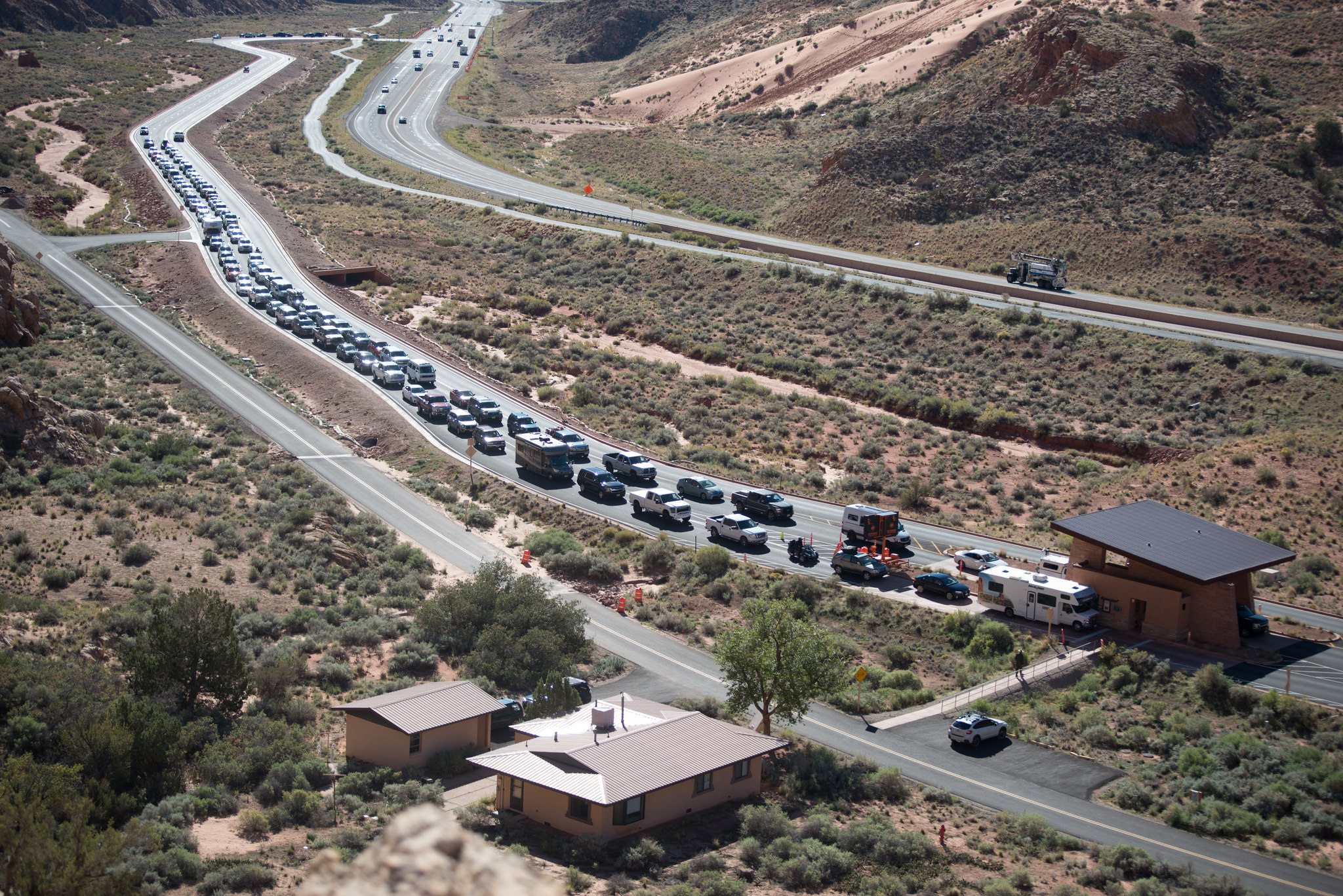Planning a summer or fall trip to a national park? Make sure it’s open.
Our national parks have been closed for more than 3 months, with few details as to when they’d again open for summer vacations, rest, and relaxation.
But as social distancing measures and travel restrictions measures lift, so do restrictions on parks. This month, some of the first national parks reopened for daily use.
Each specific NPS park page lists what is open, what is closed, and the status of nearby state parks to provide visitors/travelers with alternative options.
Read our dos and don’ts for visiting a national park here, then check out the list of parks that are reopening below.
Can I Travel to a National Park?
There is no easy yes or no answer. National parks are opening on a case-by-case, state-by-state basis to comply with local health regulations. If you live in a state that’s still under a stay-at-home or safer-at-home order, you’ll need to wait to visit a national park until after the order lifts.
“We ask the public to please recreate safely and responsibly,” wrote the NPS in its response to COVID-19. “Avoid high-risk outdoor activities, stay in your local area and follow Leave No Trace principles.”
If you live in a state where nonessential travel is allowed, consider visiting parks closest to home first (like state parks). And if you happen to be one of the lucky few to live nearby a national park that has reopened, make sure to follow the CDC and NPS guidelines to stay safe.
Between May 9 and 17, the NPS issued a statement with phased reopening guidelines for a dozen or so national parks. “We are working to increase access to the park in a phased approach,” reads the NPS site update page. “Currently there are closed facilities, limited services, and closures of some areas and roads to vehicles.”
Many national parks are also implementing restrictions on the number of visitors, so be sure to read park information carefully.
Dos and Don’ts: Visiting a National Park in 2020
We’ve rounded up a list of the most common new safety guidelines across U.S. national parks. But be sure to visit each park’s page on NPS.gov to learn more details on what is accessible and when.
- Do comply with state and local guidance. As tempting as it is, just because a park is open doesn’t mean you should go.
- Do follow the 6-foot distancing rule.
- Do pack everything in and out. This LNT rule is one we’re already used to, but during COVID-19, we recommend extra caution. Facilities and resources you usually take for granted may not be available. This includes packing in items like all drinking water, food, and a park map.
- Do avoid crowded areas. Limitations on trails might mean that once open, a park is more crowded than usual. Avoid peak times and popular areas.
- Don’t enter closed areas or hike on closed trails. It’s not just campgrounds and playgrounds that are closed for safety, some trails are too. National park staff members are working hard to get all trail maintenance up to date in preparation for reopening.
- Don’t approach wildlife. With large percentages of city populations at home, both city and wilderness areas have seen an increase in wildlife activity. It puts both you and others in danger. As always, do not approach.
- Do stay home if you’re sick or caring for someone who is. You can always visit national parks virtually in the meantime.

Choose a national park from the list below to learn more about open trails, national park highways, and more.
National Parks Open Now
- Denali National Park, Alaska (backpacking areas open, but climbing season suspended)
- Glacier Bay National Park, Alaska (entrance/trail use by permit only, campground open)
- Kenai Fjords National Park, Alaska (some areas open)
- Katmai National Park, Alaska (camping suspended until August 10)
- Wrangell – St Elias National Park, Alaska (some trails open)
- Lake Clark National Park, Alaska (outdoor visitor center open, all other areas closed)
- Gates of the Arctic National Park, Alaska (many areas closed, aviation access suspended)
- Hot Springs National Park, Arkansas (limited visitor services and restrooms open)
- Petrified Forest National Park, Arizona (park roads and visitor center open)
- Saguaro National Park, Arizona (day use only)
- Grand Canyon National Park, Arizona (south entrance open, day use only)
- Channel Islands National Park, California (open at 40 percent capacity)
- Death Valley National Park, California and Nevada (trailheads and roads reopened)
- Joshua Tree National Park, California (roads and limited trails open)
- Lassen Volcanic National Park, California (some sections open)
- Redwood National Park, California (day use only)
- Pinnacles National Park, California (roads and park open for day use, campground open only for existing reservations)
- Sequoia and Kings Canyon National Parks, California (day use only)
- Yosemite National Park, California (day use and permitted users in wilderness areas)
- Black Canyon of the Gunnison National Park, Colorado (day use only)
- Great Sand Dunes National Park, Colorado (day use only)
- Mesa Verde National Park, Colorado (campground and roads open, limited trails open)
- Rocky Mountain National Park, Colorado (trails open, timed entry permits)
- Biscayne National Park, Florida (trails, boat launches, and restrooms open)
- Dry Tortugas National Park, Florida (several keys reopening)
- Everglades National Park, Florida (day-use area and some beach campsites)
- Hawaii Volcanoes National Park, Hawaii (some areas open)
- Haleakala National Park, Hawaii (limited day use areas open)
- Indiana Dunes National Park, Indiana (some beaches open)
- Mammoth Cave National Park, Kentucky (trail use only)
- Acadia National Park, Maine (day use areas open; quarantining period before entry required; no camping until July 1)
- Glacier National Park, Montana (limited entry system for day use)
- Isle Royale National Park, Michigan (open with limited transportation, some areas closed for all of 2020)
- Gateway Arch National Park, Missouri
- Voyageurs National Park, Minnesota (day use and permitted overnight camping open)
- Great Basin National Park, Nevada (trails and visitor centers open)
- Carlsbad Caverns National Park, New Mexico (park roads and trails open)
- Theodore Roosevelt National Park, North Dakota (day use only)
- Cuyahoga Valley National Park, Ohio (trails open, clockwise travel only)
- Crater Lake National Park, Oregon (day use only)
- Congaree National Park, South Carolina (backcountry day use only)
- Badlands National Park, South Dakota (some roads and trails open)
- Wind Cave National Park, South Dakota (limited trail open)
- Great Smoky Mountains National Park, Tennessee and North Carolina (day use only)
- Big Bend National Park, Texas
- Arches National Park, Utah (trails and roads open)
- Bryce Canyon National Park, Utah (limited trails open, day use only)
- Canyonlands National Park, Utah (trails and roads open)
- Capitol Reef National Park, Utah (roads, trails and some backcountry camping open)
- Zion National Park, Utah (day use only)
- Virgin Islands National Park, Virgin Islands (trails and beaches open)
- Shenandoah National Park, Virginia (park and backcountry areas open)
- Mount Rainier National Park, Washington (backcountry areas open)
- North Cascades National Park, Washington (campgrounds and backcountry sites open)
- Olympic National Park, Washington (day use only)
- Grand Teton National Park, Wyoming (roads, hiking trails, and fishing areas)
- Yellowstone National Park, Idaho, Montana, and Wyoming (all entrances open, most trails and restrooms open)
- Parks Canada National Parks Campgrounds (scheduled to open after June 21, face coverings required in indoor spaces)
National Parks Closed Until Further Notice**
- Kobuk Valley National Park, Alaska
- American Samoa National Park, American Samoa (quarantine period before entry required, border and flight restrictions still in place)
**We will continue to update this list as more information from NPS becomes available.










